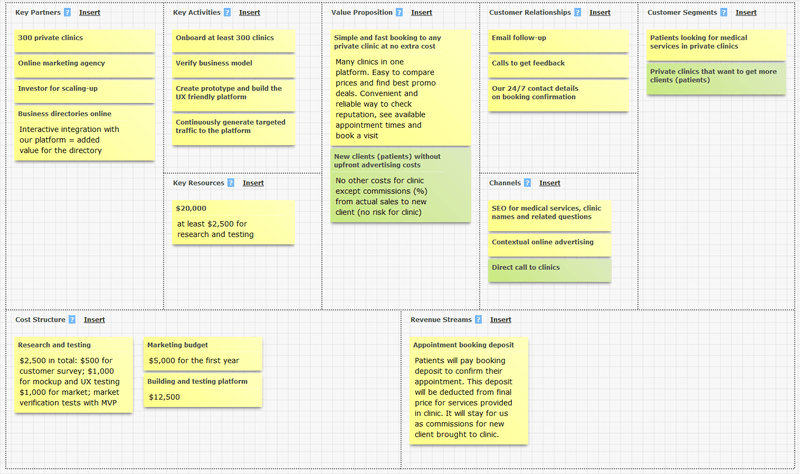Draw Your Business Model on One Page
Episode #3 of the course How to start a startup with zero budget by Dr. Donatas Jonikas
There are many inspiring stories about startup founders who encountered difficult challenges but persevered because of their passion. No matter what circumstances and obstacles you might encounter, your passion is what will keep you going through the hard times. Unfortunately, while passion is great, it’s not enough to help you reach your goals. You need to have a plan!
Standard Approach Is Not a Choice
If your business idea is innovative, the standard approach is hardly the best choice. In this lesson, I’ll introduce you to a method of developing a simple business plan that is much faster and cheaper to develop than the standard approach. It allows you to draft your business model on one page and review, improve, or even abandon the idea if you see no chances of success and profit. And best of all, it doesn’t require your money.
The Business Model Canvas was proposed in 2009 by Alexander Osterwalder and Yves Pigneur. The concept of the Business Model Canvas is simple, easily applicable, and can be very effective during the startup phase, when the whole business model is regularly reviewed, updated, and sometimes reworked from scratch.
I recommend using Canvizer because I find it to be very useful when working virtually with startup founders. One great feature that saves a lot of time and helps with collaboration is that you can share a Business Model Canvas with anyone. You can give them review-only or full editing rights.
Nine Areas That Define Your Business Model
There are several different approaches for working with the Business Model Canvas, as well as a few variations of the canvas itself. For most startups, I recommend the following sequence, which starts from the essential part, the value proposition that we’ve already discussed as the first and most important step.
1. Value proposition: What will you exclusively offer to your customers? How is this offer unique, interesting, and attractive?
2. Customer segments: Who is your target customer? To whom is your offer most beneficial and most appealing?
3. Channels: How will you reach your clients? Through what channels will you communicate and deliver your offer?
4. Customer relationships: How will you receive feedback from your clients? What relationship will you have with them?
5. Revenue streams: How will you make money? Who will pay you and what will they pay you for?
6. Key resources: What resources are necessary to create and deliver the value proposition to target customers?
7. Key partners: What partners are necessary to make this business model work?
8. Key activities: What activities and tasks will you have to handle to create and deliver your value proposition?
9. Cost structure: What fixed and variable costs will you have to bear?
Here’s an example of the real business model.
Ash Maurya presented an updated Business Model Canvas in 2012 in his book, Running Lean, and calls it the “Lean Canvas.” Actually, this canvas is better adapted for scalable startups because it replaces key partners, key activities, key resources, and customer relationships with four new aspects: problem, solution, key metrics, and unfair advantage. Though these new aspects better address some of the major risks in a scalable startup, my global research on startups showed that Osterwalder’s and Pigneur’s Business Model Canvas can be as effective as a Lean Canvas for the same type of scalable startups, as long as it’s implemented in the right way.
Key Takeaway
As a startup founder, you’ll have to develop and validate your business model. Choose the canvas that is more convenient for you, and work on it on a regular basis. Use free online tools to track changes, and share your business model with your team.
In the next lesson, we will talk about how you should deal with risks related to your business model and how you should manage them.
Recommended books
Business Model Canvas by Alexander Osterwalder and Yves Pigneur
Share with friends


